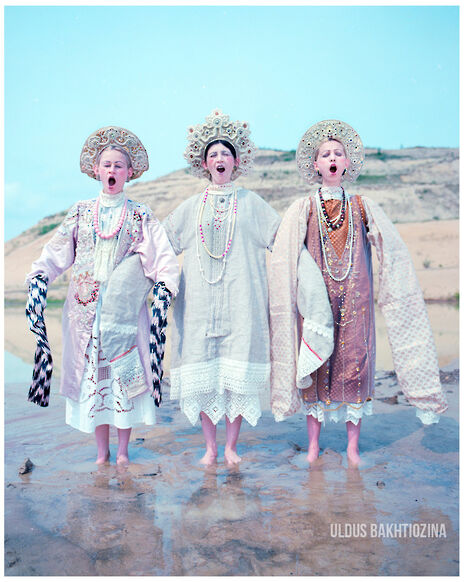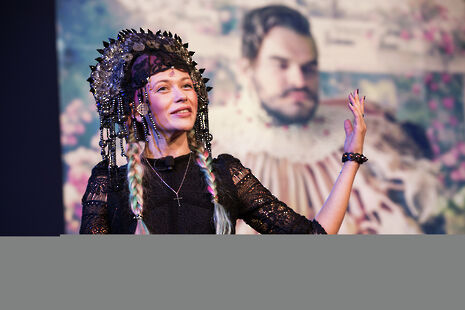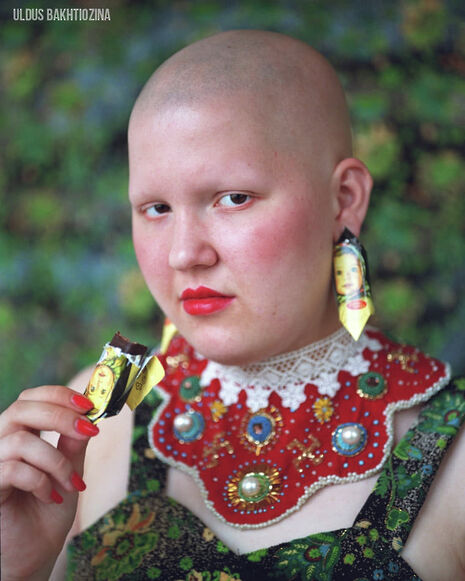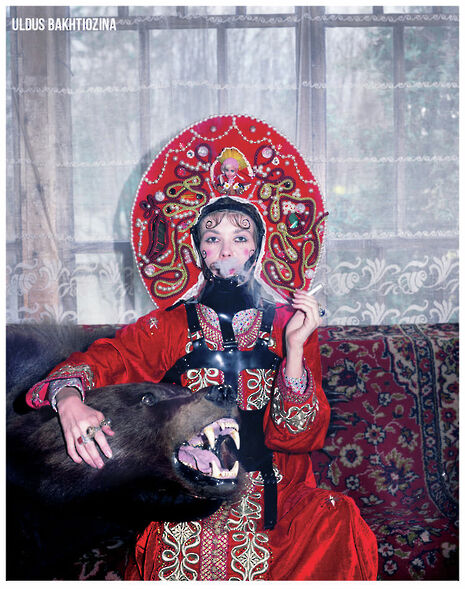Uldus Bakhtiozina – models, fairy tales and femininity
Anastasia Kolomiets sits down with the acclaimed Russian photographer to discuss her work, method and idiosyncratic ideas

Uldus Bakhtiozina is a Russian photography artist based in St. Petersburg. She works with analogue photography, capturing her intricately constructed worlds with the sensitivity of chemical film. Uldus does not retell stories as such, but takes imagery and characters from Russian fairy-tales and reinterprets them in a modern way. For Uldus, an understanding of the original pagan symbols works as ‘keys to analysis’. This idea of the authentic is central to her creative process: knowing the original intentions makes it possible to play on the deeper meanings that permeate folklore.
In June 2016, Vogue Italy named Uldus The Best Young Fashion Photographer at Photo Vogue
Uldus’s art combines the real and the supernatural. ‘What I do is always on the verge of reality and fairytale,’ she says. Mundane things – the grey sky of Petersburg and gloomy-looking personalities in the streets – can inspire her to a realisation of something ‘more unmundane’. Ultimately her art is grounded in both contemporary reality and the ancient imaginary realm of folktales. ‘Aesthetics plays a very important role in what I do.’ All the details in her photographs, from costumes to set pieces, are carefully designed by Uldus herself. ‘It is not realism, as it is, but at the same time it is all living, you can almost touch it, feel it.’

In 2014 she became the first Russian speaker in the history of the TED conference and took part in the BBC 100 women project. Then, in June 2016, Vogue Italy named Uldus The Best Young Fashion Photographer at Photo Vogue. Her works are included in museum collections across the world and are sought after by collectors internationally, But before all this, they are intensely human, and combine beauty and meaning in a thoughtful, ironic, and breathtaking way.
In choosing her models, appearance is as important as connection at a human level. Her priority in choosing her models is visual, always looking for the right type that will fit her ideas, but if she does not connect with them as a person, she will not work with them. These people are generally not professional models. It’s about ‘internal awareness’, not the person’s occupation, Uldus says, comparing it to a romantic relationship. ‘When you are on a date with someone, you know if you are going to have a second date or not. And for me, in my work with people it happens the same way.’

She finds models in different ways, sometimes it’s an accidental encounter, sometimes it’s a product of an active search for a specific (visual) type. But people with whom she works always enter her life in some mystical, magical way – never by mere coincidence. Usually there is no thorough, systematic search. ‘They appear upon some kind of request; when I have an idea, the person comes.’
Uldus tries to crystalise her own understanding of femininity as a collision of antitheses
Uldus says that ‘as practice has probably shown, I transform people very much, visually and spiritually, in my works’. She picks out personality traits that would otherwise be hidden, subordinate or even something that the person does not like about themselves, and captures the transience of a person’s identity, but identity that she carefully curates from what is there to fit what she is trying to depict. ‘I sculpt from people’, she says.
Many of her works engage with notions of femininity, often through allusions to characters from Russian folktales. She is surrounded by many women in her life whom she respects and admires. ‘I on the whole think that it is probably not right to give some general formula or emphasis, that femininity is this and that, because first of all, everyone determines for themselves how they express their femininity’.

Despite recognising this multiplicity, Uldus tries to crystalise her own understanding of femininity as a collision of antitheses: ‘I think that for me personally, a woman should be an embodiment of weakness and strength at the same time.’ To Uldus, women are magical, mystical and powerful creatures. ‘A woman is (like) a semi-divine being, though at the same time humanised, who has its own weaknesses.’ This idea of the supernatural is transcribed into folklore which her work draws so heavily from. In Russian fairy tales, femininity is really about sorcery, charms and witchcraft, Uldus clarifies, from talking to animals to transubstantiation.
In Uldus’ idiosyncratic worldview, this is still the case today. ‘Very often women, even in our modern world, are not always canonical, canonical in terms of modern standards of appearance, yet they are incredibly attractive. One can call them witches.’ Modern witches? I ask incredulously. ‘Yes, modern witches-tsarevnas’, Uldus replies confidently. But one needs to learn to embrace themselves first. So, she carefully adds, ‘those who can, not everyone’.
Special thanks to Elena Strygina from Anna Nova Gallery and Uldus Bakhtiozina for making this interview possible.
 News / Eight Cambridge researchers awarded €17m in ERC research grants27 December 2025
News / Eight Cambridge researchers awarded €17m in ERC research grants27 December 2025 News / Clare Hall spent over £500k opposing busway 24 December 2025
News / Clare Hall spent over £500k opposing busway 24 December 2025 Comment / League tables do more harm than good26 December 2025
Comment / League tables do more harm than good26 December 2025 Comment / The ‘class’ of Cambridge24 December 2025
Comment / The ‘class’ of Cambridge24 December 2025 News / Caius mourns its tree-mendous loss23 December 2025
News / Caius mourns its tree-mendous loss23 December 2025









